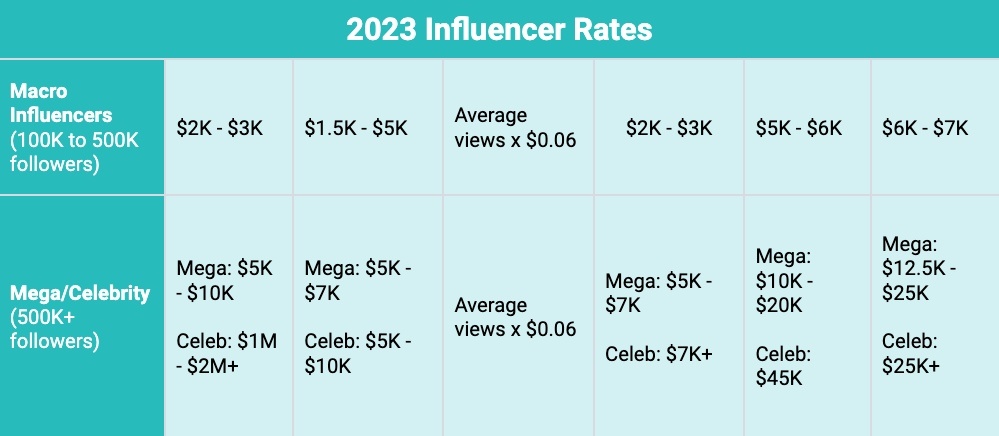In the ever-evolving world of marketing, social media influencers have become a driving force in reaching target audiences. Brands are now seeking to understand and quantify the return on investment (ROI) generated by these influential figures. “The Influence Factor: Quantifying ROI in Social Media Influencer Marketing” delves into the intricacies of measuring and evaluating the impact of social media influencers, shedding light on the importance of data-driven strategies and the tools available to quantify the influence factor. Discover how brands can harness the power of social media influencers to achieve higher ROI and gain a competitive edge in the digital landscape.
The Influence Factor: Quantifying ROI in Social Media Influencer Marketing
In today's digital age, social media has revolutionized the way brands and businesses reach their target audience. With the rise of influencer marketing, brands are leveraging the power of social media influencers to promote their products and services. However, measuring the return on investment (ROI) in influencer marketing can be a challenging task. In this article, we will explore the importance of quantifying ROI in influencer marketing, the challenges associated with it, and the key metrics and best practices to effectively measure ROI. Furthermore, we will discuss the tools and platforms available for measuring ROI and provide case studies to demonstrate how measuring ROI can significantly impact campaign success. Lastly, we will delve into future trends and innovations in ROI measurement, highlighting the potential of artificial intelligence, advanced data analytics, and cross-channel measurement.
Understanding Social Media Influencer Marketing
Social media influencer marketing involves leveraging the popularity and credibility of social media influencers to promote products and services. Influencers, who have amassed a loyal following on platforms like Instagram, YouTube, and TikTok, have the ability to sway their audience's purchasing decisions. Through sponsored posts and collaborations, brands partner with influencers to create authentic content that resonates with their target audience. This form of marketing has gained considerable traction in recent years due to its potential to reach a wide and engaged audience.
The Importance of Measuring ROI in Influencer Marketing
As with any marketing effort, measuring ROI is crucial to understand the effectiveness and success of influencer marketing campaigns. While the benefits of influencer marketing are evident, such as increased brand awareness and engagement, it is important for brands to have concrete data to support their investment in influencers. By quantifying the ROI, brands can determine whether their influencer partnerships are generating the desired results and if adjustments need to be made to enhance the campaign's performance. Measuring ROI also helps in evaluating the cost-effectiveness of influencer marketing compared to other marketing strategies.

This image is property of uploads-ssl.webflow.com.
Challenges in Quantifying ROI in Influencer Marketing
Measuring ROI in influencer marketing poses several challenges. One of the primary challenges is the lack of standardized metrics and methodologies. Unlike traditional advertising channels, influencer marketing is a relatively new field, making it difficult to establish industry-wide measurement standards. Choosing the right metrics and accurately attributing results to specific campaigns can be complex and subjective. Additionally, tracking conversions and tying them directly to influencer efforts can be challenging, as customers' purchasing decisions are influenced by various factors.
Influencer fraud is another challenge that can impact the accuracy of ROI measurements. Fake followers and engagement can distort the true reach and impact of influencer campaigns. Brands must exercise due diligence in selecting influencers and ensure that their follower count and engagement are genuine.
Key Metrics for Measuring ROI in Influencer Marketing
To effectively measure ROI in influencer marketing, brands need to consider a range of metrics across different stages of the customer journey. Here are some key metrics to consider:

This image is property of reach-influencers.com.
1. Engagement Metrics
1.1 Likes, Comments, and Shares: The number of likes, comments, and shares on influencer posts indicate the level of audience engagement and interest generated by the content.
1.2 Click-through Rates: Tracking the number of clicks generated from influencer links or calls-to-action provides insights into the effectiveness of driving traffic to a brand's website or landing page.
1.3 Conversion Rates: Determining the percentage of visitors who take a desired action, such as making a purchase or subscribing to a newsletter, helps gauge the conversion effectiveness of influencer marketing.
2. Reach Metrics
2.1 Follower Counts: The number of followers an influencer has can indicate the potential reach of their content, although it is important to consider the quality of followers as well.
2.2 Impressions: The total number of times influencer content is displayed to social media users provides insights into the potential exposure and visibility generated by the campaign.
2.3 Reach vs. Engagements: Evaluating the ratio between reach and engagement metrics helps understand the level of audience interaction and the effectiveness of the content in driving meaningful engagement.

This image is property of keyhole.co.
3. Brand Awareness Metrics
3.1 Brand Mentions: Monitoring the number of times a brand is mentioned or tagged in influencer posts provides an indication of the level of brand awareness generated among the influencer's audience.
3.2 Hashtag Performance: Tracking the usage and engagement with brand-specific hashtags helps measure the impact of influencer campaigns on generating brand-related conversations and user-generated content.
3.3 Social Media Sentiment: Analyzing the sentiment of audience reactions, such as positive or negative comments, can provide insights into the impact of influencer content on brand perception and sentiment.
4. Sales Metrics
4.1 Direct Sales: Tracking the number of sales generated directly from influencer campaigns provides a tangible indicator of the revenue generated from influencer marketing efforts.
4.2 Coupon Codes and Affiliate Links: The usage and redemption of unique coupon codes or affiliate links associated with influencers allow for accurate tracking of sales and attribution to specific influencers.
4.3 Cost per Acquisition: Calculating the cost incurred to acquire a new customer through influencer marketing helps evaluate the cost-effectiveness of the campaigns in driving new business.
This image is property of media.graphassets.com.
5. Return on Investment (ROI)
5.1 Determining the Costs: To accurately calculate ROI, brands must consider both the direct costs associated with influencer partnerships (e.g., fees paid to influencers) and indirect costs (e.g., production costs, campaign management).
5.2 Calculating ROI: ROI can be calculated by subtracting the campaign costs from the overall revenue generated and dividing that by the campaign costs.
5.3 Benchmarking ROI: Comparing the ROI of influencer marketing campaigns to other marketing strategies can provide valuable insights into the effectiveness and cost-efficiency of influencer partnerships.
6. Tools and Platforms for Measuring ROI
To streamline the measurement process, there are several tools and platforms available:
6.1 Social Media Analytics: Platforms like Instagram Insights, YouTube Analytics, and TikTok Analytics provide data on engagement, reach, and audience demographics, enabling brands to track and analyze the performance of influencer campaigns.
6.2 Influencer Marketing Platforms: These platforms offer comprehensive metrics, campaign tracking, and influencer discovery tools, making it easier for brands to measure and assess the ROI of their influencer marketing efforts.
6.3 Third-party Analytics Tools: Brands can utilize third-party analytics tools like Google Analytics and social media listening tools to gain deeper insights into the impact of influencer campaigns on website traffic, conversions, and customer behavior.

This image is property of static.tildacdn.com.
7. Case Studies on Measuring ROI
Real-world case studies provide tangible examples of the impact of measuring ROI in influencer marketing:
7.1 Brand X: How Measuring ROI Improved Campaign Success
Brand X partnered with a popular Instagram fashion influencer to promote their new clothing line. By closely tracking engagement metrics, reach, and sales generated using unique affiliate links, Brand X was able to optimize their campaign in real-time. Adjusting the content strategy and targeting specific audience segments resulted in a significant increase in engagement and sales, ultimately enhancing the campaign's overall ROI.
7.2 Brand Y: Challenges and Lessons in ROI Measurement
Brand Y collaborated with multiple influencers across different social media platforms to promote their beauty products. However, without a standardized tracking system and clear goals, measuring the ROI proved to be challenging. By implementing UTM parameters and tracking links, Brand Y was able to accurately attribute sales and conversions to specific influencers, allowing for better optimization and measurement of ROI in future campaigns.









